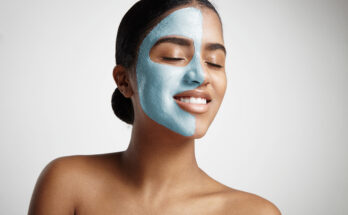What Is the Best Way to Get Clear Skin? Most people dream of having a clear skin complexion with a healthy glow, but it often feels like an unobtainable dream. When there are so many skincare products, practices and healthy living trends available to us, it can be hard to figure out what really works and what doesn’t. To have clear skin, there is no one easy answer. However, with the right combination of a balanced skincare routine, a healthy lifestyle, and some science-based techniques to apply to your skincare and wellness, you can vastly improve the look and health of your skin.
This guide will cover how to get clear skin, touching on everything from your cleansing routine and eating habits to hydration, stress management, and expert tips.
What Is the Best Way to Get Clear Skin?
which fruit are good for healthy skin
how cam i promate my digital products faster
What Is Clear Skin?
Before we get into routines and remedies, it is important to define what “clear skin” actually is. Clear skin typically means the absence of:
- Acne and skin blemish
- oiliness or dryness
- redness and inflammation
- pore or skin textures
- dark spots and hyperpigmentation
Clear skin also looks smooth, hydrated and luminous. Your individual skin condition can have a major effect from your genetic background, however, it can also be influenced heavily by your daily habits.
1.Establishing a Regular Skincare Routine
A regular and thoughtful skincare routine will create the foundation for clear skin. Let’s break the steps up.
Step 1 – Cleanser
Cleansers are important because they wash off the oil and dirt as well as makeup that will clog your pores. Opt for a gentle cleanser that is appropriate for your skin type. Non-comedogenic cleansers should suffice.
Oily skin: Gel based cleanser with salicylic acid or tea tree oil.
Dry skin: Creamy cleanser with a hydrating ingredient like glycerin or hyaluronic acid.
Sensitive skin: Non-foaming, fragrance free cleanser.
Pro tip: Don’t over-cleanse. Twice a day; morning and night, is sufficient.
Step 2 – Exfoliation
Exfoliation is a step that helps remove dead skin, which can dull your complexion or contribute to breakouts. If you can afford to; use a chemical exfoliator (AHAs and/or BHAs). Once or twice a week will keep your skin tone more even, due to dead skin shed lessening breakouts.
AHAs e.g. Glycolic acid, can be good for people with dry or sun-damaged skin.
BHAs e.g. Salicylic acid, will work best if you have an unhealthy amount of oil on your skin or acne issues.
Do not use harsh scrubs as they may cause microtears in your skin.
Step 3 – Toning
Toners maintain skin’s pH levels and prep skin for absorbing other products. Some great toners to have in your skin regimen include:
Witch hazel – great for oily skin.
Rose Water – good for extra hydration.
Niacinamide – brightens skin.
Step 4 – Moisturizer
Every skin type, even oily skin, needs to be hydrated.
2.Food for Your Skin
What you consume impacts the appearance and function of your skin. Some foods can cause acne, inflammation, and oiliness; others will create beautiful skin and provide a glow.
Foods for Your Skin
Fruits & Veggies – contain antioxidants and vitamins C and E.
Fatty Fish – salmon and mackerel contain omega-3 fat which helps maintain elasticity of skin.
Seeds and Nuts – provide zinc, vitamin E, and healthy fats to help repair skin.
Green Tea – has high levels of polyphenol’s, which help to fight inflammation.
Water – keeps skin plump and helps to flush toxins from your system.
Foods to Avoid
Sugar and refined carbohydrates – can increase insulin levels, triggering the skin to breakout.
Dairy – can often trigger acne or skin irritations in some individuals.
Fried and processed foods can increase inflammation and oil production.
Caffeine and alcohol in excess – can cause dehydration in the skin.
Pro tip: You don’t have to make a drastic change to help your skin. Simply incorporating a green smoothie or a hand full of almonds into your daily diet can be the first step to better skins.

3.Hydrate
Hydration is essential for achieving soft, glowing skin. Well-hydrated skin will retain moisture, appears puffier, and is less likely to flake, or develop fine lines, when your body is well hydrated.
Aim to drink at least 8 glasses of water per day
And eat foods rich in water such as cucumber, watermelon, or celery.
Minimize diuretics like coffee and alcohol.
Bonus – add slices of lemon or cucumber for some flavor!
4.Don’t Skip Sleep
Your skin repairs itself while you sleep. If you are not getting enough rest, you could experience dull skin, dark circles under your eyes, and higher stress hormone levels, which can trigger the development of acne.
Sleep Tips for Clear Skin:
Get 7-9 hours of good sleep a night.
Consider silk pillowcases to reduce friction and bacteria.
Sleep on your back to reduce the potential for wrinkles and breaks outs.
5.Manage your stress
Stress triggers hormonal changes in the body which increase oil production, worsen inflammation, and slows down healing time, all of which are bad for your skin.
Stress Reducing Techniques:
Exercise: which helps circulation and stress relief
Meditation and yoga: which balances your cortisol levels
Deep breathing: decreases anxiety and provides better sleep.
Even 10 minutes a day of practicing mindfulness or stretching can support clearer skin.
6.Practice Good Hygiene
Sometimes basic hygiene can make a big difference in keeping breakouts at bay and irritation.
Cleanliness Habits for Clear Skin:
Wash your pillowcase every 3-4 days.
Wipe down your phone screen regularly.
Avoid touching your face during the day.
Sanitize your make-up brushes once a week.
Take-off your make-up before bed-always!
7.Choose Effective Skincare Products
Not all skincare products are created equally. Watch the ingredients and labels closely.
Look for Products with These Ingredients:
Salicylic acid: Opens pores and helps prevent acne
Benzoyl peroxide: Destroys the bacteria that causes acne
Niacinamide: Reduces inflamation and size of pores
Retinol: Speeds up cell turnover and acknowledges spots
Hyaluronic acid: Deeply hydrates without clogging pores.
Vitamin C: Brightens skin and protects against sun damage.

Eliminate products that have:
Heavty fragrance–especially, perfumes
Alcohols that dry out skin
Harsh sulfates.
Patch Test New Products:
Test new products on a small patch of skin to prevent allergic reactions or irritations.
8.Use Natural Remedies
If you are more towards using natural methods, then find or create a few easy, common, DIY remedies that can help keep your skin clear. Examples include:
Honey Mask: Antibacterial and moisturizing.
Aloe Vera Gel: Soothe’s/Heals.
Tea Tree Oil: A natural acne treatment (use a carrier oil to dilute).
Apple Cider Vinegar Toner: Normalizes pH (use with caution).
Many natural remedies are gentler- however always do a patch area test and avoid using them excessively.
9.Do Not Pick or Pop Your Pimples
While it’s certainly tempting to pick or pop your pimples, doing so will spread bacteria, increase your chances of scarring, and lengthen your time to heal.
What To Do Instead:
Use a spot treatment (like benzoyl peroxide)
Use a cold compress for inflammation
Cover with a hydrocolloid pimple patch
Leave it alone for natural healing and the best results.
10.Know When to See a Dermatologist
If your skin concerns are serious or just won’t go away, then seeing a trusted professional half the battle. Schedule a visit with a dermatologist, if:
- You have moderate to severe acne
- You have cystic breakouts
- Over-the-counter products are not working
- You are having trouble with pigmentation or scarring
They have access to treatment options, like:
- Prescription creams or oral medication
- Chemical peels
- Microneedling
- Laser treatment
- Acne extractions

11.Seasonal Changes in Skin Care Routine
Like the weather, your skin is always changing! Consider changing your routine with the seasons:
In the winter, use a richer moisturizer and hydrating masks.
In the summer, use lighter, hydrating products and more SPF.
In the spring and fall, exfoliate as needed to remove dead skin build up.
Being mindful of the weather will support healthy skin all year through!
12.Develop Patience and Discipline
Clear skin isn’t an overnight process, it requires time, consistency and care.
3 takeaways for long term skin success!
Stick to your routine for at least 6-8 weeks before making a judgement on the results!
Keep a skin care journal to track triggers and progress!
Don’t change too many products at one time!
Think of your routine as self-care and not a chore.
Conclusion:
A Holistic Approach to Achieving Clear Skin
Achieving clear skin is a holistic approach to skincare. Clear skin comes from a healthy skin routine, healthy lifestyle, and above all, patience. While everyone’s skin is different, most people can achieve wonderful and glowing skin through the following fundamental principles:
Keep to a relatively simple and consistent skin care routine
Eat food that is nutrient dense and stay hydrated
Minimize your stress, sleep well
Practice good hygiene, and most importantly, use the right products
Know when to seek professional help!
There is no magic product or shortcut, but if you stick to the above concepts over time, commitment and consistency will yield results!



